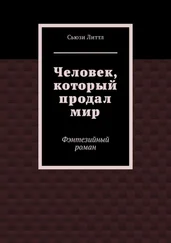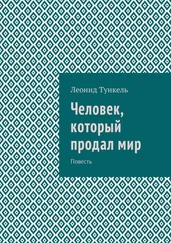Vernadsky, Kievan Russia p. 311.
Bretschneider, Mediaeval Researches I p. 313.
Mitchell & Forbes, Chronicle of Novgorod pp. 83–84; d'Ohsson, Histoire II p. 117; Fennell, Crisis p. 81.
Boyle, Successors p. 60; Grekov & Yakubovski, Horde d'Or p. 202; Moss, History of Russia p. 69.
Hyland, Medieval Warhorse p. 127.
Boyle, Successors pp. 60–61; Bretschneider, Mediaeval Researches I pp. 316–317. For the Georgian defeat see Altunian, Mongolen und ihre Eroberungen pp. 33–41; Spuler, Mongolen in Iran pp. 34–35, 41–42; Dawson, Mongol Mission p. 41.
Rachewiltz, In the Service p. 24.
Pelliot, 'A propos des Comans,' loc. cit. p. 169.
Bretschneider, Mediaeval Researches I p. 322; Vasary, Cumans and Tatars p. 81.
Pentti Aalto, 'Swells of the Mongol Storm around the Baltic,' Acta Orientalia Academiae Scientiarum Hungaricae 36 (1982) pp. 5–15.
JR II pp. 1170–1171. Another expedition, under Batu's brother Shinqor in 1242–43, was said to have penetrated so far north that they met people with fair hair and there was just one hour of night (Wolff, Mongolen oder Tartaren pp. 148, 383).
Так у автора. — Прим. пер .
Bretschneider, Mediaeval Researches I p. 317; Fennell, Crisis pp. 81–82.
Mitchell & Forbes, Chronicle of Novgorod pp. 84–85.
Fennell, Crisis p. 104.
Fennell, Crisis p. 104.
«Дальше некуда» ( лат .), в данном случае «верх наглости».
Bretschneider, Mediaeval Researches I pp. 307, 317–318; Grekov & Yakubovski, Horde d'Orpp. 204, 305; Fennell, Crisis p. 82; Vernadsky, Mongols and Russia p. 52.
David B. Miller, 'The Kievan Principality on the Eve of the Mongol Invasion: An Inquiry into Current Historical Research and Interpretation,' Harvard Ukranian Studies 10 (1986) pp. 215–240; Pelenski, Contest for the Legacy; Soloviev, Shift Northward. The quote is from Fennell, Crisis p. 82.
Franklin & Shepard, Emergence of Rus pp. 2, 13, 279, 282, 287.
Bretschneider, Mediaeval Researches I p. 318.
Fennell, Crisis p. 83.
Церковь Успения Пресвятой Богородицы, первая каменная церковь. — Прим. пер .
Vernadsky, Mongols and Russia p. 52.
Русская православная церковь почитает день памяти святого Николая 19 декабря, Римско-католическая церковь — 6 декабря. — Прим. пер .
Boyle, Successors p. 69.
Dawson, Mongol Mission pp. 29–30.
Wiener, Anthology of Russian Literature I pp. 105–106.
Bretschneider, Mediaeval Researches I pp. 319–323; Spuler, Goldene Horde pp. 20–25; Vernadsky, Mongols and Russia pp. 52–58; d'Ohsson, Histoire II p. 122; Dimnik, Dynasty of Chernigov pp. 331–358.
SHR pp. 206–207.
Skelton, Marston & Painter, Vinland Map pp. 76–77.
Christian, History I p. 412.
SHR pp. 206–207; SHC pp. 215–216; Boyle, Successors p. 138.
Rachewiltz, Commentary pp. 1012–1013.
Государственные интересы ( фр .).
Rachewiltz, Commentary pp. 1015–1016.
Rachewiltz, Commentary pp. 1017–1019.
P. Ratchnevsky, 'Die Rechtsverhaltnisse bei den Mongolen im 12.-13. Jahrhundert,' Central Asiatic Journal 31 (1987) pp. 64–110 (at pp. 89–90).
Rachewiltz, Commentary pp. 1012–1013, 1015–1016; d'Ohsson, Histoire II p. 627.
JB II p. 587; Boyle, Successors pp. 138, 204, 212; Jackson & Morgan, Rubruck pp. 144–145; Dawson, Mongol Mission p. 59.
Stevenson, Chronicle of Melrose, p. 86; Jackson, Mongols and the West p. 65.
Matthew Paris, Chronica Majora III pp. 488–489; Buell, Dictionary p. 161.
Matthew Paris, Chronica Majora III pp. 488–489; IV pp. 76–78, 112–119.
Jackson, Mongols and the West p. 61.
For Prester John and the Mongols see Yule, Cathay I pp. 173–182; Yule & Cordier, Ser Marco Polo I pp. 226–245; David Morgan, 'Prester John and the Mongols,' in Beckingham & Hamilton, Prester John pp. 159–170. Marco Polo identified Prester John not with Genghis but with Toghril (Ong Khan) (ibid. pp. 165–166). Other accounts seem to have conflated Genghis and his deadly enemy Quqluq. There were many variants on the Prester John theme. One idea was that the turmoil in Russia was because 'Prester John's' armies had revolted against him (Aubrey de Trois-Fontaines, Chronica in Monumenta Germaniae Historica, Scriptores 23 p. 942). Another was that the Mongols were the legendary giants Gog and Magog and that the Muslims should fear them even more than the Christians did. See David Cook, 'Apocalyptic Incidents during the Mongol Invasion,' in Brandes & Schmieder, Endzeiten pp. 293–312; C. Burnett, 'An Apocryphal Letter from the Arabic Philosopher al-Kindi to Theodore, Frederick Il's Astrologer concerning Gog and Magog, the Enclosed Nations and the Scourge of the Mongols,' Viator 15 (1984) pp. 151–167.
Rodenberg, Epistolae I pp. 178–179; Denis Sinor, 'Les relations entre les Mongols et l'Europe jusqu'a la mort d'Arghoun et de Bela TV,' Journal of World History 3 (1956) pp. 39–62 (at p. 40).
C. W. Connell, 'Western Views on the Origin of the "Tartars": An Example of the Influence of Myth in the Second Half of the Thirteenth Century,' Journal of Medieval and Renaissance Studies 3 (1973) pp. 115–137 (at pp. 117–118); Axel Klopprogge, 'Das Mongolenbild im Abendland,' in Conermann & Kusber, Mongolen im Asien pp. 8–101; Kloprogge, Ursprung und Auspragung pp. 155–159; Aubrey de Trois-Fontaines, Chronica in Monumenta Germaniae Historica, Scriptores 23 p. 911.
Monumenta Germaniae Historica, Scriptores 32 p. 208; Dorrie, Drei Texte zur Geschichte der Ungarn und Mongolen, pp. 125–202 (at pp. 165–182); Denis Sinor, 'Les relations entre les Mongols et l'Europe,' loc. cit pp. 39–62 (at p. 43); Antoine Mostaert & F. W Cleaves, 'Trois documents mongols des archives secretes vaticanes,' Harvard Journal of Asiatic Studies 15 (1952) pp. 419–506.
Louis Hambis, 'Saint Louis et les Mongols,' Journal Asiatique 258 (1970) pp. 25-ЗЗ; Richard, Saint Louis pp. 160–180; Goff, Saint Louis pp. 552–555; Peter Jackson, 'The Crusades of 1239–1241 and their aftermath,' Bulletin of the School of Oriental and African Studies 50 (1987) pp. 32–60. Nevertheless Louis did later send out spies and envoys who made contact with the Mongols and brought back much important intelligence. See Matthew Paris, Chronica Majora v pp. 37–38; vi pp. 113–116; Richard, Simon de St Quentin pp. 94–117; G. C. Guzman, 'Simon of St Quentin and the Dominican Mission to the Mongol Baiju: A Reappraisal,' Speculum 46 (1971) pp. 232–249.
Читать дальше
Конец ознакомительного отрывка
Купить книгу

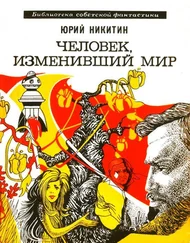

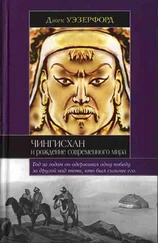
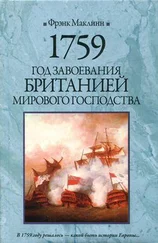

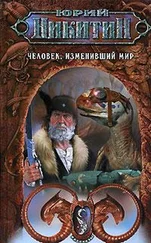
![Ксения Чепикова - Человек, научивший мир читать [История Великой информационной революции]](/books/388624/kseniya-chepikova-chelovek-nauchivshij-mir-chitat-ist-thumb.webp)
